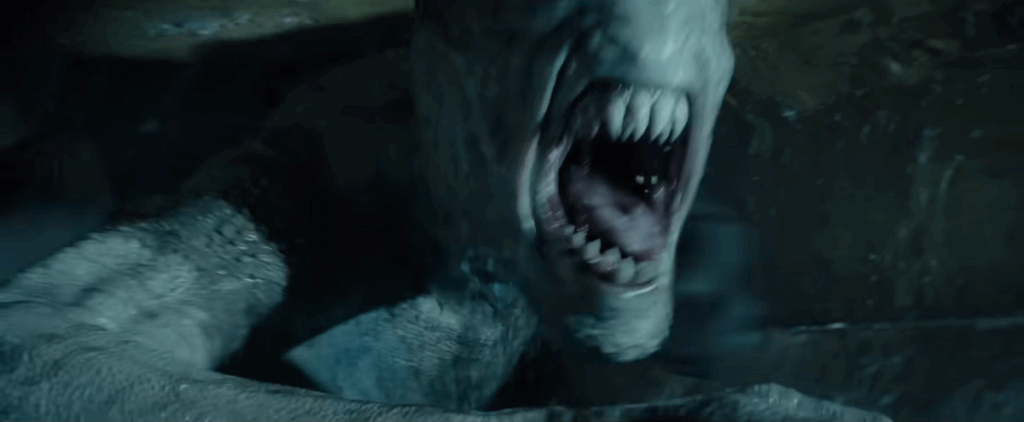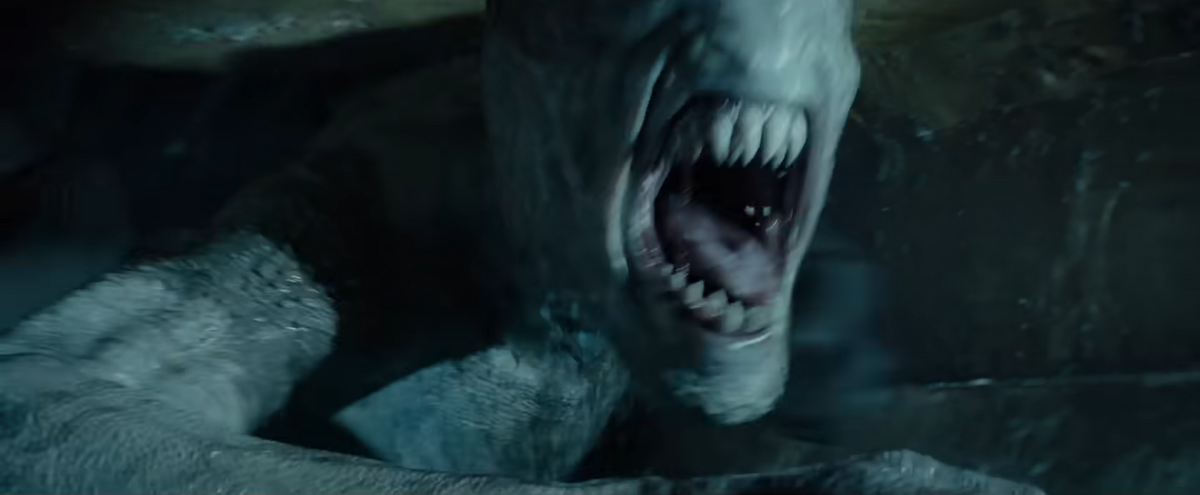
The Hunger Games Mutts: Exploring the Genetically Engineered Terrors of Panem
The Hunger Games series, penned by Suzanne Collins, is renowned for its gripping narrative, compelling characters, and chilling dystopian setting. Within the arena’s deadly confines and beyond, genetically engineered creatures known as mutts play a significant role, adding another layer of horror and moral complexity to the story. These mutts, short for muttations, are not mere beasts; they are terrifying instruments of the Capitol, designed to inflict psychological and physical torment upon the tributes and the citizens of Panem. This article delves into the terrifying world of Hunger Games mutts, exploring their various forms, their purpose, and the ethical implications of their creation.
What are Mutts in The Hunger Games?
Mutts in the world of Panem are genetically engineered creatures created by the Gamemakers. They serve as weapons, obstacles, and psychological tools in the Hunger Games. Unlike naturally occurring animals, mutts are specifically designed to incite fear, target specific tributes, and generally add to the spectacle and horror of the Games. Their appearances and abilities vary greatly depending on their intended purpose within the arena.
The Capitol uses genetic engineering to create these mutts, blending animal DNA and sometimes even human DNA to craft nightmarish creatures. This manipulation of nature reflects the Capitol’s power and its disregard for ethical boundaries. The very existence of these mutts highlights the lengths to which the Capitol will go to maintain control and entertain its citizens.
Types of Mutts Encountered in The Hunger Games
Throughout the Hunger Games trilogy, several types of mutts are introduced, each with its unique characteristics and purpose:
Tracker Jackers
Tracker Jackers are arguably the most well-known mutts. These genetically engineered wasps are intensely aggressive and possess a potent venom that causes hallucinations. A single sting can induce severe pain and disorientation, while multiple stings can be fatal. Katniss Everdeen uses Tracker Jackers to her advantage in the first Hunger Games, dropping a nest on her opponents and gaining a strategic advantage. The hallucinations caused by Tracker Jacker venom are particularly disturbing, as they force victims to confront their deepest fears and insecurities. [See also: Katniss Everdeen Survival Skills]
Wolf Mutts
Wolf mutts appear in both the first and second Hunger Games. In the first Games, they are unleashed by the Gamemakers as the final obstacle for the remaining tributes. These wolf mutts are particularly horrifying because they resemble the deceased tributes, bearing their eyes and other distinguishing features. This psychological manipulation is designed to torment the surviving tributes, forcing them to confront their guilt and grief. In Catching Fire, wolf mutts are used in the clock arena, further demonstrating the Gamemakers’ creativity in designing horrific challenges.
Monkey Mutts
Monkey mutts are featured in Catching Fire within the clock arena. These mutts are aggressive and intelligent, attacking the tributes with coordinated precision. They demonstrate the Capitol’s ability to create mutts with sophisticated hunting strategies, making them a formidable threat.
Jabberjays and Mockingjays
While not strictly mutts in the traditional sense, Jabberjays and Mockingjays are genetically engineered birds with unique abilities. Jabberjays were initially created by the Capitol to spy on the rebels, capable of recording and repeating human speech. However, when the rebels caught on, they used the Jabberjays to spread misinformation. The Capitol then abandoned the Jabberjays, leaving them to die out. Instead, they mated with mockingbirds and created Mockingjays. Mockingjays can mimic sounds, including human melodies, and become a symbol of rebellion throughout Panem because they are a symbol of the Capitol’s failures to control nature. Katniss Everdeen’s association with the Mockingjay solidifies her role as the symbol of the rebellion. [See also: Symbolism in The Hunger Games]
Lizard Mutts
The Lizard mutts are also featured in Catching Fire, within the clock arena. These mutts are venomous and can paralyze their prey. They demonstrate the Capitol’s ability to create mutts with sophisticated hunting strategies, making them a formidable threat.
Other Mutts
Beyond these specific examples, the Hunger Games universe implies the existence of countless other mutts, each designed for a particular purpose. The Gamemakers’ creativity seems boundless, and the potential for creating new and terrifying creatures is always present. The Capitol’s resources and technology allow them to constantly evolve and refine their mutt creations, ensuring that the Hunger Games remain a spectacle of horror and innovation.
The Purpose of Mutts in the Hunger Games
The use of mutts in the Hunger Games serves several key purposes:
- Entertainment: The primary function of the Hunger Games is to entertain the Capitol’s citizens. Mutts add an element of unpredictability and horror, heightening the spectacle and keeping viewers engaged.
- Control: The Games serve as a tool of control, reminding the districts of the Capitol’s power and the consequences of rebellion. Mutts reinforce this message by demonstrating the Capitol’s ability to manipulate nature and inflict pain.
- Psychological Warfare: Mutts are often designed to target the tributes’ psychological vulnerabilities. By creating creatures that resemble deceased loved ones or induce hallucinations, the Gamemakers can break the tributes’ spirits and weaken their resolve.
- Elimination: Ultimately, mutts are weapons designed to eliminate tributes. They serve as obstacles and challenges that the tributes must overcome to survive.
Ethical Implications of Mutt Creation
The creation and use of mutts raise profound ethical questions. The manipulation of genetics to create creatures designed for violence and psychological torment is a clear violation of ethical boundaries. The Capitol’s disregard for the well-being of these creatures, as well as the tributes who are forced to face them, highlights the moral decay of their society. The use of the mutts is designed to terrorize the districts, and the ethical implications of this are that the Capitol is using science and genetic engineering to control and oppress the people of Panem. [See also: The Morality of the Hunger Games]
The creation of mutts also raises questions about the nature of humanity and the responsibility that comes with advanced technology. The Capitol’s willingness to use genetic engineering for such cruel purposes serves as a cautionary tale about the potential for technology to be used for evil.
Mutts as Symbols of Oppression
In the Hunger Games, mutts are not just creatures; they are symbols of the Capitol’s oppression and the lengths to which they will go to maintain power. They represent the Capitol’s control over nature, its disregard for human life, and its willingness to use fear as a weapon. The mutts are a constant reminder to the districts of their vulnerability and the consequences of defying the Capitol.
The use of mutts also highlights the dehumanization that occurs within the Hunger Games. The tributes are reduced to mere pawns in a game, and the mutts are simply tools used to eliminate them. This dehumanization is a key element of the Capitol’s strategy to maintain control and suppress rebellion.
The Legacy of Mutts in The Hunger Games
The mutts of the Hunger Games have left a lasting impact on popular culture, serving as a chilling reminder of the dangers of unchecked power and the ethical implications of advanced technology. They are a testament to Suzanne Collins’ ability to create a compelling and thought-provoking dystopian world that resonates with readers of all ages.
The mutts also serve as a symbol of the resilience of the human spirit. Despite the horrors they face, the tributes continue to fight for survival and ultimately rise up against the Capitol. Their courage and determination inspire hope in the face of overwhelming odds.
Conclusion
The Hunger Games mutts are more than just monsters; they are complex and multifaceted symbols of oppression, control, and the ethical dilemmas of advanced technology. They serve as a constant reminder of the Capitol’s cruelty and the lengths to which they will go to maintain power. By exploring the world of Hunger Games mutts, we gain a deeper understanding of the themes and messages that make the Hunger Games such a powerful and enduring story. These genetically engineered terrors contribute significantly to the dystopian world, adding layers of complexity and horror that captivate readers and viewers alike. As long as the Hunger Games remains relevant, the chilling legacy of the mutts will continue to haunt our imaginations, prompting us to reflect on the potential consequences of unchecked power and the importance of ethical responsibility.

